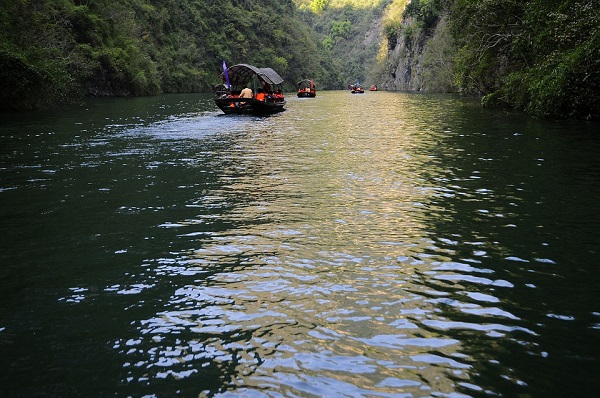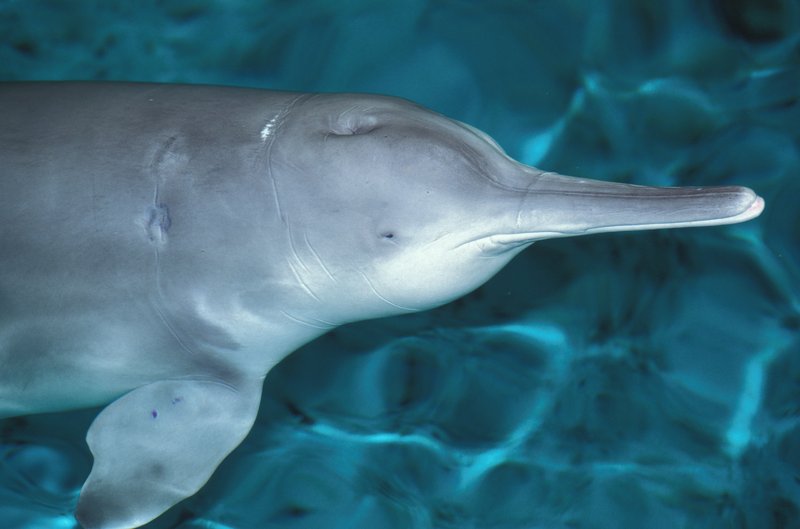Asia’s Longest River, The Yangtze is Drying Up
Written by Manya Pandey, a first-year undergraduate student.
China has probably lost its precious Yangtze river dolphin otherwise known as Baji.
Written by Manya Pandey, a first-year undergraduate student.
A record-breaking drought has hit the Yangtze river in China and has caused parts of it to dry up.
Tell me about the Yangtze river

The Yangtze river is Asia’s longest river and is located in China. It’s 6,300 km long, which makes it the longest river in Asia and the third-longest river in the world.
The Yangtze starts in the mountains of Tibet (in western China). For the most part it runs through mountains and at the end it goes through plains.
Over 700 streams and rivers flow into the Yangtze.
Dams on the Yangtze are built to control flooding and also to produce electric power.
What’s happening right now?
It is currently experiencing the longest and most severe drought in recent history. A really bad drought (meaning that there is a shortage in the water supply ) has led to parts of the river drying up. The drought started in the month of June this year and shows no sign of stopping.
What does this mean for the people and sea life?
Here are some of the impacts…
The river provides drinking water to over 400 million people in China and generates over 100 billion kilowatts of electricity annually, so there has been severe electricity shortages too.
Also, with thousands of its tributaries drying up, the river can no longer transport goods to the upstream ports in fact there is not enough water to sail and there have been severe electricity shortages too.
And, crops are also affected. Nearly half of the country’s crops are grown around the Yangtze – like rice, cotton, wheat, barley, corn, etc.
Disrupted hydroelectricity generation
As the rivers across China dry up, water flow to dams and reservoirs falls short. This abrupts electricity generation through hydroelectric power plants (power stations that generate electricity by using water).
Electricity shortages across the nations have led factories like Toyota and Volkswagen to temporarily halt operations. People with electric cars are waiting hours in line sometimes overnight to charge their vehicles.
Not just people, crops are failing too
The heat has scorched thousands of hectares of agricultural land and has led to the failure of major cash crops and staple crops as well.
Let’s have a look at some figures here
- 2.2 million hectares of agricultural land are burning
- Yangtze’s main basin has been 50% below the water level in the last 5 years
- Average temperatures have risen to 44 degrees
- Over 780,000 people are in direct need of government support
- In August China faced an 11-week heatwave, the most intense in 60 years
Aquatic fauna at risk
Fishes can be seen wiggling on the river bank because there is not enough water to swim.
The Chinese alligator and Yangtze giant softshell turtle, the largest living species of freshwater turtle in the world, are critically endangered due to this habitat loss.
Wildlife conservationists are gathering different endangered species that lived in the river in hope of preserving them so they can be returned to the river once the drought is over. Although this drought offers a great chance to study the river bed and its marine fauna some fishes are in danger of going extinct, for instance, the Yangtze dolphin. submerged ruins have also surfaced
The Yangtze river dolphin is no more
China has probably lost its precious Yangtze river dolphin otherwise known as Baiji.

The animal was so rare that people called it the “Goddess of the Yangtze”. It was believed to bring fortune to locals and protection to fishermen and those lucky enough to spot it but the sacred animal has probably gone extinct in the river.
The baiji is now said to be the first dolphin species that have become extinct due to humans activity.
The IUCN, International union for conservation of Nature deemed the animal “critically endangered or possibly extinct”. The dolphin was really unique and its absence surely leaves a big hole in the Yangtze ecosystem.
So how is China dealing with all this?
Electricity shortages have prompted the nation to revert back to coal, a huge contributor to air pollution. Coal power plants are in full swing but this means a compromise in climate goals.
China had committed to becoming coal neutral by 2060, but this energy crisis has pushed them back to using fossil fuels. The country was already producing 65 percent of its total electricity from coal power plants in 2019, but the number has gone even higher with this drought and heatwave.
The authorities are rationing electricity supply, encouraging farmers to go for early harvest and the local governments are being urged to store all the water they can for emergencies. All in all, there is not much that can be done but this could be taken as a lesson for how drastic the effects of climate change can be.
I Kid You Not now has a large readership across India and also parts of the world. If you want to write for us, you can submit your story here. You can also apply to become a news anchor. Apply here

Better Your Child’s G.K. In 3 Minutes – Get This Free Newsletter
Get fun facts, simple and easy news, quizzes, and lots of other interesting things to read in your mailbox – for free! It’s what we call GK-on-the-go.
I Kid You Not now has a large readership across India and also parts of the world. If you want to write for us, you can submit your story here. You can also apply to become a news anchor. Apply here



Comments